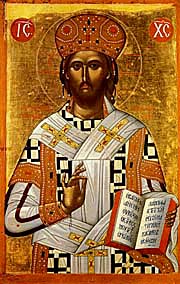The Institute for Christian Formation

The Dedication of the Basilica of Saint Mary Major
Feast Day (optional memorial): August 5
The Papal Basilica of Santa Maria Maggiore, or Saint Mary Major, is the oldest basilica in the West dedicated to the Mother of God. The basilica was first built around the year 352 during the reign of Pope Liberius. According to an ancient tradition, the Virgin Mary, herself, decided on the location for this basilica. The legend goes that there was a Patrician John and his wife, who were childless and prayed to Mary for an heir. John had a dream in which he had a vision of Mary requesting that a church be built on the Esquiline Hill in Rome, and that the exact location for this church would be marked in snow. The legend says that Pope Liberius also had a similar dream/vision, in which Mary requested that a church be built in her honor at a location she would miraculously indicate. These two dreams, according to the legend, occurred overnight August 4-5. The story goes on to say that on the morning of August 5 – in the heat of the Roman summer – the Esquiline Hill was covered in snow at the exact location where the church would be built. John and his wife rushed to the hill, as did the Pope. The legend says that Pope Liberius staked out the perimeter of the church before the snow melted, and that the Patrician John financed the building of the basilica.
Miracle of the Snow:
Foundation of Santa Maria Maggiore
Artist: Masolino da Panicale
Date: c. 1428-1432
Location: Museo di Capodimonte, Naples
Each year on August 5, as the feast of the Dedication of the Basilica of Saint Mary Major is celebrated at Mass at the basilica, the legend of the miraculous August 5 snowfall on the Esquiline Hill is commemorated. During the Gloria at this Mass, a shower of white rose petals is released and descends from the ceiling.
Given the beauty and history of this basilica dedicated to the Mother of God, it is no wonder that Pope Francis made a prayerful visit to this church one of his first stops after being elected Pope in March 2013.
Learn more about the Basilica of Saint Mary Major at the Vatican web site, and take a virtual tour of the basilica, also at the Vatican site.
Icon of “Salus Populi Romani”
“Protectress of the Roman People”
Nothing remains from this original church building. The present basilica was rebuilt on the site in the 5th century at the direction of Pope Sixtus III. It was at the Council of Ephesus in 431 that Mary was proclaimed “Theotokos”, which is Greek for “God-Bearer” or “Mother of God.” This was the event that gave Pope Sixtus the impetus for this action. In the 5th century, Pope Sixtus also commissioned beautiful mosaics for the nave and triumphal arch of this basilica.
At least from the 7th century this basilica has been referred to as Saint Mary the Great, or Saint Mary Major. It is also sometimes referred to as “Our Lady of the Snows” due to the legend of the
The entire basilica, including the museum it houses, is a feast for the senses, as well as the soul! One icon, in particular, holds a special place in the hearts of the people of Rome: the icon of “Salus Populi Romani” – “Protectress of the Roman People.” Located in the Borghese Chapel within the Basilica of Saint Mary Major, tradition says this icon was the work of Saint Luke, himself. This chapel was built in the early 1600s at the order of Pope Paul V to house this Byzantine-style icon. In this icon the Christ child is holding the Book of the Gospels in his left hand while his right hand is positioned in blessing. Mary is holding a “mappula,” which is like an embroidered ceremonial handkerchief and has imperial symbolism. Tradition says that Saint Helena brought this icon back to Rome from the Holy Land. Throughout history, on several occasions, this icon has been carried in procession at times of grave epidemics rampant among the Roman people, and is said to be miraculous. Among other treasures housed in the Basilica of Saint Mary Major is what is venerated as a relic of the Holy Crib from Bethlehem.
Celebrate the Dedication of the Basilica of Saint Mary Major in your home!
Follow us on Facebook to keep up to date with our news and newest resources!


miraculous August snowfall following the dreams/visions of the Patrician John and Pope Liberius.
Saint Mary Major is the largest church in the world dedicated to Mary, the Mother of God. Its architecture and art are stellar. The 5th century mosaics commissioned by Pope Sixtus III are only part of the treasures in this basilica.

If you cannot be in Rome to celebrate Mass at Saint Mary Major on August 5, keep the feast of the Dedication of the Basilica of Saint Mary Major in your own home. Prominently display an icon or other image of Mary, the Mother of God, on your prayer table. At your dinner, have a bouquet of white roses (or at least a single white rose). Tell the story of “Our Lady of the Snows”, sing a Marian Hymn, and ask Mary, the Mother of God to watch over your home and family.
